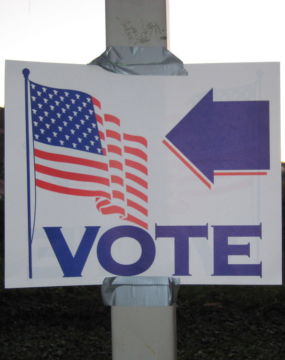Elections & Voting
Keep up with our latest demographic insights

It’s been almost three years since the 2016 general election and in that time, there have been demographic shifts in North Carolina. With just under a year before the 2020 election cycle, we’ve broken down the changes by partisan composition and who makes up our newly registered voting population. First, we should note: our state’s population continues to grow North Carolina has experienced steady population gains since 2016, with net gains masking a larger turnover…

North Carolina’s Hispanic or Latino population increased by nearly 116,000 resident between 2012 and 2017, an increase of 13.8% in just five years. The adult population grew faster than the child population over this period. And for both Latino adults and children, growth was due entirely to an increase in the citizen population. The non-citizen population of Latino children and adults decreased by 23.1% and 10.4%, respectively, between 2012 and 2017. As a result of…

Every decade, following the decennial Census, the 435 seats in the U.S. House of Representatives are allocated to the 50 states based on their population. After the 2000 Census, 12 House seats shifted between the states; another 12 seats shifted after the 2010 Census. Two years ago, we explored how ongoing population shifts might impact the reapportionment process following the 2020 Census. At that time, the most recent population estimates were for 2014. Today we…
Over half (54%) of North Carolina’s voting-eligible (18+ citizen) population is North Carolina born, according to estimates from the 2014 American Community Survey. This is slightly below the national proportion of 56% of eligible voters born in their current state of residence. Louisiana has the highest proportion of state native potential voters at 77% while Nevada has by far the lowest rate. Just 14% of Nevada’s voting-eligible residents were born in Nevada. As individuals moved…
North Carolina’s population is rapidly diversifying. Since 2000, the state’s Asian population has more than doubled, increasing from 114,000 to 268,000, a growth rate of 136%. The Hispanic population has grown at a similar pace, with even more significant numeric increases. In 2000, North Carolina had 379,000 Hispanic residents. By 2015, the Hispanic population was nearly 912,000, an increase of more than half a million or 141% over fifteen years. This diversity is not fully…
As of October 1st, North Carolina had 5.6 million active, registered voters. Of these, 2.2 million or 40% were registered as a Democrat. Age Older voters are the most likely to register as a Democrat, partly reflecting the legacy of the “Solid South.” Nearly 1 in 2 voters ages 75 and older—48%—are registered Democrats compared to 35% of 18-34 year-olds, 37% of 35-54 year-olds, and 43% of voters ages 55-74. As a result, older adults…
As of October 1st, North Carolina had 5.6 million active, registered voters. Of these, 1.8 million or 31% were registered as Republican. Age Younger voters are the least likely to register as Republican, reflecting their higher affinity for registering unaffiliated. Just 25% of voters ages 18-34 are registered Republican compared to 32% of 35-54 year-olds, 34% of 55-74 year-olds, and 35% of voters ages 75 and older. As a result, older adults, especially those ages…
As of October 1st, North Carolina had 5.6 million active, registered voters. Of these, 1.6 million or 29% were registered as unaffiliated. Age Younger voters are more likely to register as unaffiliated: 39% of voters ages 18-34 are unaffiliated compared to 30% of 35-54 year-olds, 23% of 55-74 year-olds, and 17% of voters ages 75 and older. The median age of unaffiliated voters is just 43 compared to 52 for voters registered with a party.…
With the majority of North Carolina's population growth since 1990 fueled by net in-migration, the share of residents born in other states and countries has steadily increased. According to the State Board of Elections, over 6.6 million North Carolinians were registered to vote as of September 3rd, 2016. Where were they born? In the 9/3/2016 data, 85% of voters provided information on place of birth. Half of the voters who reported their birthplace were born in North…
Over at Old North State Politics (and on Twitter as @BowTiePolitics), Dr. Michael Bitzer of Catawba College has been diving into the State Board of Elections registered voter data to understand demographic and partisan trends in voter registration. In response to recent posts about generational patterns, someone asked: “What percentage of each generation remains unregistered to vote in North Carolina?” Our estimates indicate that 14% of voting-eligible Millennials (ages 18-34 in 2016) and 8% of…
Your support is critical to our mission of measuring, understanding, and predicting population change and its impact. Donate to Carolina Demography today.